calsfoundation@cals.org
Carroll County
| Region: | Northwest |
| County Seats: | Berryville, Eureka Springs |
| Established: | November 1, 1833 |
| Parent County: | Izard |
| Population: | 28,260 (2020 Census) |
| Area: | 629.94 square miles (2020 Census) |
| Historical Population as per the U.S. Census: | |||||||||
|
1810 |
1820 |
1830 |
1840 |
1850 |
1860 |
1870 |
1880 |
1890 |
1900 |
|
– |
– |
– |
2,844 |
4,614 |
9,383 |
5,780 |
13,337 |
17,288 |
18,848 |
|
1910 |
1920 |
1930 |
1940 |
1950 |
1960 |
1970 |
1980 |
1990 |
2000 |
|
16,829 |
17,786 |
15,820 |
14,737 |
13,244 |
11,284 |
12,301 |
16,203 |
18,654 |
25,357 |
|
2010 |
2020 |
|
|
|
|
|
|
|
|
|
27,446 |
28,260 |
|
|
|
|
|
|
|
|
| Population Characteristics as per the 2020 U.S. Census: | ||
| White |
21,952 |
77.7% |
| African American |
95 |
0.3% |
| American Indian |
369 |
1.3% |
| Asian |
567 |
2.0% |
| Native Hawaiian or Other Pacific Islander |
444 |
1.6% |
| Some Other Race |
2,475 |
8.8% |
| Two or More Races |
2,358 |
8.3% |
| Hispanic Origin (may be of any race) |
4,306 |
15.2% |
| Population Density |
44.9 people per square mile |
|
| Median Household Income (2019) |
$46,110 |
|
| Per Capita Income (2015–2019) |
$25,295 |
|
| Percent of Population below Poverty Line (2019) |
14.8% |
|
Changing boundary lines, the massacre of a California-bound wagon train, and the power of healing springs have extended Carroll County’s impact far beyond its borders. While retaining its rural status, Carroll County has successfully merged its history with the changing times to create a county that draws a diverse group of residents as well as tourists.
Louisiana Purchase through Early Statehood
Louisiana Territory, Missouri Territory, and finally Arkansas Territory were names given to the land that became Carroll County. The Osage hunted the land until they ceded their rights to northwest Arkansas in an 1808 treaty. In 1818, the United States government established a reservation for the Western Cherokee. The northwest boundary of the reservation ran diagonally through what is now Carroll County. In 1828, the reservation was given up, and the land became the property of the federal government once more. The Trail of Tears crossed the area (then Lawrence County and later Izard County) before Carroll County was created on November 1, 1833. Travel on the trail continued through the end of the decade. The county was named after Maryland resident Charles Carroll. Carroll, one of the first to sign the Declaration of Independence, identified himself by adding his place of residence as he penned “Charles Carroll of Carrollton.”
The county’s boundaries changed several times. Sections were taken in 1836 and 1838 to create Madison and Searcy counties. Another portion became Newton County in 1842. The creation of Boone County in 1869 reduced Carroll below the minimum square miles required for a county, so part of Madison County was added.
William and Charles Sneed were the area’s first settlers. Carrollton was the county seat for a time. Located on the Military Road, it became a thriving community and saw many changes. In 1844, a Marion County political feud between the Tutt and Everett families turned violent. The Carroll County Militia was ordered to Marion County to put an end to the bloodshed. The ill-fated Fancher wagon train passed through the town in 1857; it would later be attacked by Mormons in Utah in what is known as the Mountain Meadows Massacre. The surviving children were returned to Arkansas two years later.
In the county’s early years, lumber mills appeared, farmers grew sustenance crops, and an abundance of game made for good hunting. The Kings River, the White River, and other water sources such as Osage and Dry Fork provided access to the growing county. A post office was established at Green Forest in 1855, discontinued in 1856, and reestablished in 1867.
Civil War through Reconstruction
As in other counties in northwest Arkansas, after resisting the state’s determination to secede, the county voted for delegates to attend the convention to decide the allegiance of Arkansas to the dividing nation. Slavery was not widespread in the county, with only 330 enslaved persons appearing on the 1860 federal census along with 9,053 white residents. Carroll County residents voted for delegates who would remain loyal to the United States. The county was represented by William Watkins and B. H. Hobbs. Watkins was not a slaveowner, while Hobbs owned an enslaved teenage girl.
However, a second session of the Secession Convention found things very different. A change in county attitudes and the secession of several states had Carroll County and its delegates in favor of joining the Confederate States of America. But the county was divided. Peace societies sprang up. Union and Confederate troops crossed the county several times, engaging in skirmishes. Bushwhackers presented the most problems. Carrollton was destroyed, leaving little more than stables. Two residences and a hotel were all that remained in Berryville. Skirmishes occurred at King’s River, Yokum Creek, Carrollton, and the Osage Branch of the King’s River. Union troops moved in and out of the county, encamping and occupying it at times.
Corn, wheat, rye, oats, and potatoes were some of the county’s main crops. Farmers also grew grapes, plums, apples, and peaches. The timber crop consisted of black oak, post oak, and cedar. Cotton was added to Carroll County’s agricultural crop prior to the Civil War. Decreasing prices contributed to the declining production. Bears, deer, turkeys, and wild cats roamed the county.
Post Reconstruction through the Gilded Age
The following years were hard as people tried to reestablish their lives. Created in 1869, Boone County took a large part of Carroll County. With Carrollton no longer in the middle of the county, a proposal was made to move the county seat to Berryville. After a fierce political battle, an election settled the conflict when Berryville was declared the county seat in 1875. A courthouse was constructed in 1880. A newspaper, the Carroll County Bowlder, was the first printed in the county. It was printed in Carrollton in late 1874 and later moved to Berryville. Carrollton High School, Fairview Academy, and Clarke’s Academy provided education in Carroll County.
The use of mineral springs in the western part of the county in 1879 brought a rapid population increase in the area. Individuals seeking the healing powers of its waters made Eureka Springs a thriving community. The new town drew residents far different from the farm families in the county. The railroad reached Eureka Springs in 1883 when the Eureka Springs Railway ran between the city and Seligman, Missouri. The judicial district of Carroll County was divided into two sections in 1883: an eastern district with the seat at Berryville and a western district with the seat at Eureka Springs. The split initiated another battle for the eastern seat as Green Forest challenged Berryville. After an election, Berryville retained the position.
Carrie Nation, famous for her fight against alcohol, settled in Eureka Springs. Future governor James Henderson Berry practiced law in Carroll County. Timber, apple, and peach production increased.
At least two cases of extrajudicial punishment took place in the county in the late nineteenth century. Two accused horse thieves from Missouri were hanged by a posse in western Carroll County in 1878 and William Morrison was lynched in July 1887 after being accused of child abuse.
Early Twentieth Century
Additional rail travel came to Carroll County with the completion of the St. Louis and North Arkansas line from Harrison (Boone County) to Green Forest, Berryville, and Eureka Springs in 1901. The line contributed to the development of Grandview, and Urbanette grew up along the tracks. Shipping cattle became a primary business of Urbanette. The Carroll County Courthouse, Western District, was constructed in Eureka Springs in 1908.
Education played an important role in the development of the county, with the aforementioned Clarke’s Academy operating from 1867 to 1905 in Berryville and the Crescent College and Conservatory for Young Women serving students at the Crescent Hotel from 1908 to 1924. It was succeeded by the Crescent Junior College, which operated from 1930 to 1934.
When World War I began, residents marched off to serve their country. Eureka Springs native Marcellus Holmes Chiles received the Medal of Honor posthumously for his actions in the last days of the war. The 1920s and 1930s were hard in Carroll County; due to an economy based on agriculture, many residents had to seek employment elsewhere. Some headed to the oil fields in Oklahoma, others to California. Thus began a population decline that lasted until 1960.
Canning factories sprang up, making tomatoes the biggest cash crop. Interest in the Ozarks region had been created by author Harold Bell Wright in his novel, Shepherd of the Hills. Tourism became a focus as people came in search of the beauty of the hills and the uniqueness of Eureka Springs. Green Forest native James Thomas Braswell wrote a song about the Ozarks, “The Land of a Million Smiles”; the title proved useful in promoting tourism in the Ozarks. Former Eureka Springs mayor Claude Albert Fuller was elected to the U.S. House of Representatives in 1928.
World War II through the Faubus Era
The 1940s brought more troubles for the county. A deadly tornado struck Berryville on October 29, 1942. Arkansas Gazette reporter Joe Wirges described the scene as the worst he had seen in his fifteen years of covering major tornadoes. The attack on Pearl Harbor and the beginning of U.S. involvement in World War II took residents to Europe and Asia. The population continued to decline as men and women went to war.
James W. Trimble of Berryville was elected to the U.S. House in 1944. He held the position, serving on the Rules Committee, until 1967. His service to northwest Arkansas included helping secure new post offices, rural electrification, and the development of Pea Ridge Battlefield. The James W. Trimble Lock and Dam near Fort Smith honors Trimble’s contribution to the waterways of northwest Arkansas.
Poultry growers increased production. So many turkeys were raised in Carroll County that it was called the Turkey Capital of Arkansas in 1953 and still produced the most turkeys in the state in 1970. Ocoma Foods in Berryville and Franz Food Products in Green Forest processed poultry. Tyson Foods later bought both companies.
The county became known for the number of residents who worked to preserve traditional Ozark folklore and traditions. Fred High preserved traditional folk song performances, while Vance Randolph collected material related to life in the Ozarks, ranging from speech to superstitions. During this same time period, local museums began to operate, including the Saunders Museum, which opened in Berryville in 1956 and houses the extensive firearms collection of Colonel Charles Burton “Buck” Saunders, a world champion at shooting pistols. On display are guns that belonged to Sam Houston, Annie Oakley, Belle Starr, and Jesse and Frank James, as well as a bowie knife and other items.
School consolidation decreased the number of districts in Carroll County from one hundred to three: Green Forest, Berryville, and Eureka Springs.
Multiple authors and artists made the county their home, with most residing near Eureka Springs. Authors and poets Cora Elizabeth Pinkley Call, Glenn Ward Dresbach, and Beverley Githens Dresbach lived in Carroll County, as did artists Harry Louis Freund, Glenn C. Swedlun, Glenn Gant, and Elsie Mari Bates Freund.
The back-to-the-land movement in the 1960s brought new residents who wanted to simplify their lives. The influx created a noticeable distinction in the county’s cities as Eureka Springs drew unconventional residents while the remainder of the county maintained its more traditional base. Beaver Dam was completed in 1966, creating Beaver Lake. Holiday Island began as a retirement community on the banks of Table Rock Lake. Sex and the Single Girl, a book published in 1962, brought fame to Green Forest native Helen Gurley Brown, who went on to become editor of Cosmopolitan magazine.
Dedicated in 1966, the Christ of the Ozarks statue in Eureka Springs initiated the first step in a new tourism boom. Gerald L. K. and Elna M. Smith envisioned other attractions that their foundation would build: the Great Passion Play and the Bible Museum. The Christian-based attractions were in stark contrast to the more liberal, artistic leanings of the city.
Modern Era
Poultry continues to play a role in Carroll County. The need for workers in the industry resulted in a 1,174% increase in the Hispanic population between 1990 and 2000, and another 41.2% increase from 2000 to 2010. Tourism continues as the attractions and festivals draw crowds. The Great Passion Play, New Holy Lands, and the Bible Museum became favorite attractions for church groups. Turpentine Creek Wildlife Refuge near Eureka Springs cares for exotic big cats and other animals and is open to the public. Thorncrown Chapel is a popular wedding location. Visitors also attend the annual Ozark Mountain UFO Conference. Jazz festivals, biker events, and gay and lesbian gatherings promote Eureka Springs’ diverse culture. The remainder of the county takes a more traditional route. Visitors with roots deep in Carroll County return to trace their ancestry at the Carroll County Historical and Genealogical Society, which is housed in the 1880 courthouse in Berryville (now housing the Carroll County Heritage Center).
In 2011, the Arkansas General Assembly enacted Act 1171, which clarified the relationship of the two judicial districts of Carroll County. The act makes the Kings River the boundary between the two districts, amending Act 74 of 1883. The earlier act had specified a north-south line west of the river, which had once been the Madison County line. Act 1171 also allowed commingling tax revenue from both districts for various county projects (such as funding libraries in the county). Both changes allowed the county government to continue practices that had been maintained for decades without legal authorization.
Award-winning ABC News reporter Erin Hayes began her career at KTHS radio in Berryville. Author Ned Shank with his wife, author Crescent Dragonwagon, founded the Writers’ Colony at Dairy Hollow in Eureka Springs. Multiple motion pictures have been filmed in the county, including Pass the Ammo and Chrystal, as well as the documentary The Gospel of Eureka.
Twenty-first-century Carroll County is a mix of old and new. Poultry houses dot the landscape. Roads wind through the trees and hills. New buildings rise on the outskirts as old ones continue to stand in the city centers. History and progress mingle, bringing tradition and change to Carroll County.
For additional information:
Blevins, Brooks. Hill Folks: A History of Arkansas Ozarkers and Their Image. Chapel Hill: University of North Carolina Press, 2002.
Carroll County Historical Quarterly. Berryville, AR: Carroll County Historical Society (1977–).
Hanley, Ray, and Diane Hanley. The Postcard History Series: Carroll and Boone County, Arkansas. Chicago, IL: Arcadia Publishing, 1999.
Keefe, James F., and Lynn Morrow, eds. The White River Chronicles of S. C. Turnbo: Man and Wildlife on the Ozarks Frontier. Fayetteville: University of Arkansas Press, 1994.
Lair, Jim. An Outlander’s History of Carroll County, Arkansas, 1830–1983. Marceline, MO: Walsworth Publishing Company, 1983.
Phillips, Jared M. “Hipbillies and Hillbillies: Back-to-the-Landers in the Arkansas Ozarks during the 1970s.” Arkansas Historical Quarterly 75 (Summer 2016): 89–110.
———. Hipbillies: Deep Revolution in the Arkansas Ozarks. Fayetteville: University of Arkansas Press, 2019.
C. J. Miller
Springdale, Arkansas
Revised 2022 by David Sesser, Henderson State University
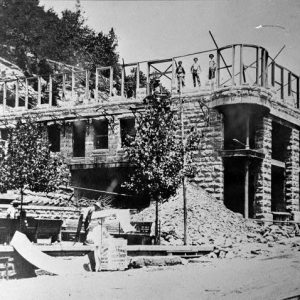 Basin Park Hotel
Basin Park Hotel  Beaver General Store
Beaver General Store 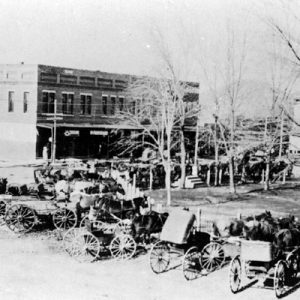 Berryville Town Square
Berryville Town Square 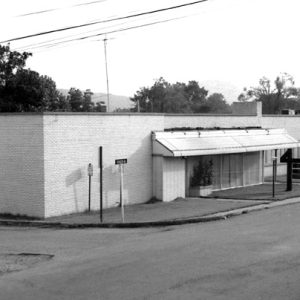 Carroll County Courthouse
Carroll County Courthouse  Carroll County Courthouse, Western District
Carroll County Courthouse, Western District 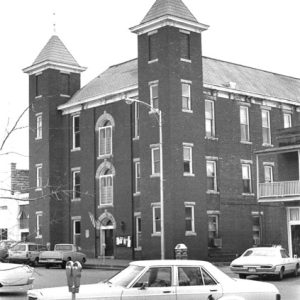 Old Carroll County Courthouse
Old Carroll County Courthouse  Carroll County Map
Carroll County Map 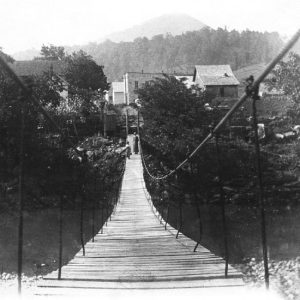 Carrollton Swinging Bridge
Carrollton Swinging Bridge 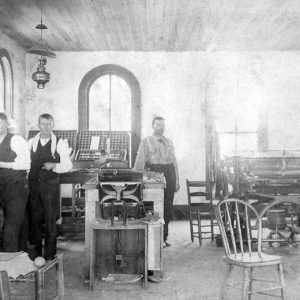 Carroll Progress Office
Carroll Progress Office 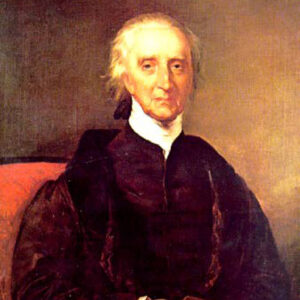 Charles Carroll
Charles Carroll  Christ of the Ozarks
Christ of the Ozarks  Christ of the Ozarks
Christ of the Ozarks  Clarke's Academy
Clarke's Academy 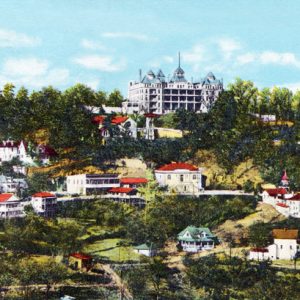 Crescent Hotel
Crescent Hotel 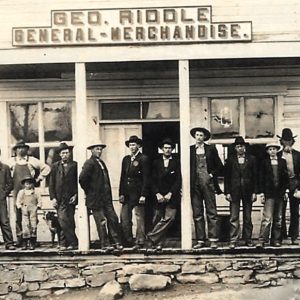 Denver Store
Denver Store 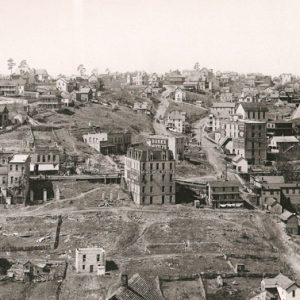 Eureka Springs; 1895
Eureka Springs; 1895 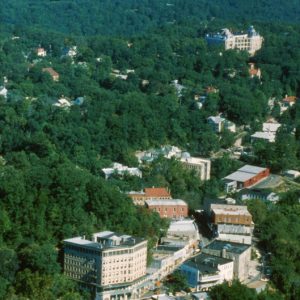 Eureka Springs Aerial View
Eureka Springs Aerial View  Eureka Springs Aerial View
Eureka Springs Aerial View 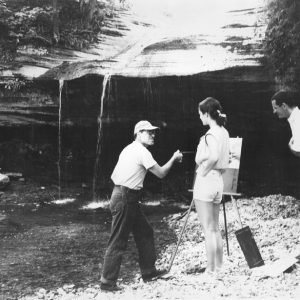 Louis Freund
Louis Freund 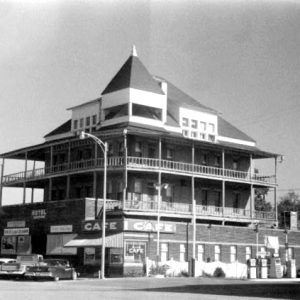 Grand View Hotel
Grand View Hotel  Green Forest Tornado
Green Forest Tornado 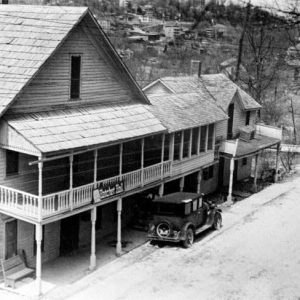 Hatchet Hall
Hatchet Hall 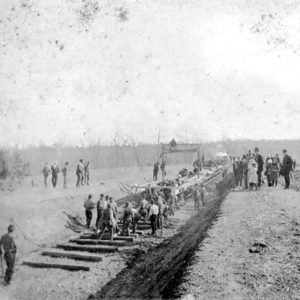 Laying Track in Carroll County
Laying Track in Carroll County  Vance Randolph
Vance Randolph 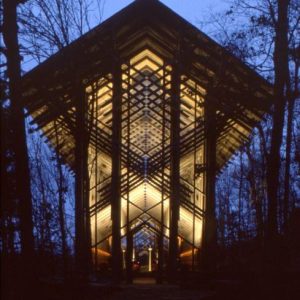 Thorncrown Chapel
Thorncrown Chapel 




Comments
No comments on this entry yet.